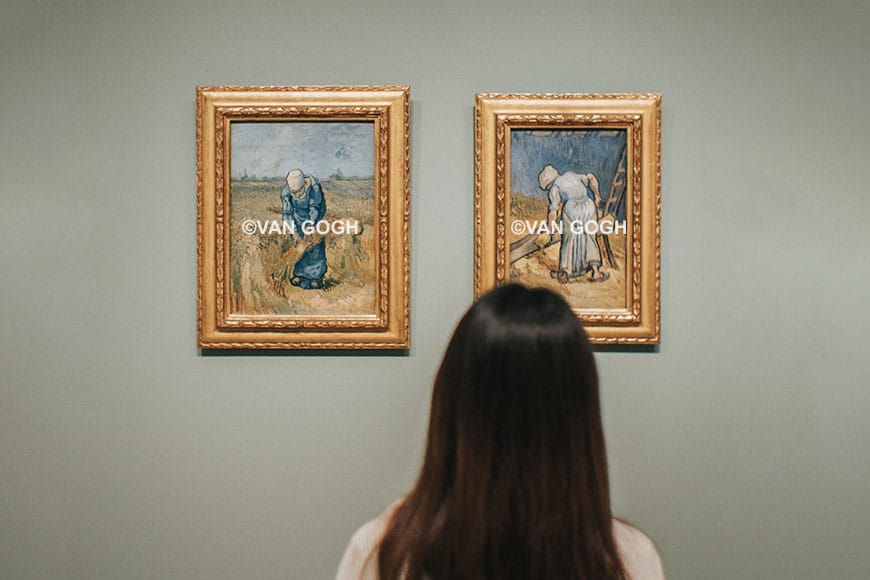Copyrighting your photo is an essential step if you’re looking to protect your creative work and ensure you’re acknowledged for your artistry. When submitting to platforms like Getty Images, having your images copyrighted not only safeguards your rights but also enhances your credibility as a photographer. In this post, we’ll break down what copyrighting your photo entails, how it works, and the ins and outs of copyright law, especially as it pertains to the imagery submitted to stock photo platforms. So let’s dive right in!
Understanding Copyright Law

Copyright law is a fundamental aspect of protecting creative works, and understanding it is crucial for any photographer. In essence, copyright gives creators exclusive rights to use and distribute their work. Here are some key points to consider:
- What Can Be Copyrighted: Generally, any original work of authorship, including photos, drawings, music, and literature, can be copyrighted. Your photos fall firmly in this category.
- Automatic Protection: The moment you take a photo, it is automatically protected by copyright law, which means you don’t have to formally register it to claim rights. However, registration offers additional legal benefits.
- Rights Granted: Copyright gives you the exclusive rights to reproduce, distribute, perform, and display your work. In short, you get to control how your photos are used.
- Duration of Copyright: Copyright protection typically lasts for the creator's life plus an additional 70 years. This can vary based on different countries’ laws.
- Limitations: There are exceptions to copyright, such as fair use in education, criticism, and commentary. It’s essential to understand these limitations to protect your work effectively.
By familiarizing yourself with copyright law, you’ll be better equipped to safeguard your photographs, especially when submitting them to Getty! Remember, knowledge is power, and understanding your rights is the first step toward being a successful photographer.
Also Read This: Does Shutterstock Have a Free Trial? Exploring Options for Exploring the Platform
3. Steps to Copyright Your Photo

Copyrighting your photo is a crucial step in protecting your creative work, especially if you plan on submitting it to Getty Images. Here are the steps you need to follow to secure your copyright:
- Take Your Photo: First and foremost, make sure you own the rights to the photo you wish to copyright. Take high-quality images that represent your unique vision.
- Document Your Work: Create a record that includes the date the photo was taken, its location, and any other relevant details. This could be simply noting it down in a digital or physical format.
- Register Your Copyright: In the U.S., you can register your copyright with the U.S. Copyright Office. This can be done online through their website. Make sure to fill in the necessary forms and pay the applicable fees. You'll typically need to provide:
| Information Required | Details |
|---|---|
| Your Name | The name of the copyright holder. |
| Title of Work | The title of your photo. |
| Date of Creation | The date when the photo was taken. |
Remember, copyright protection is automatic as of the moment you take the photo, but registering it gives you additional legal advantages.
Also Read This: Making Money from Alamy Images: Exploring Revenue Opportunities
4. Submitting Your Photo to Getty

Once you've copyrighted your photo, the next step is to submit it to Getty Images. The submission process is easy but requires careful attention to detail to maximize your acceptance chances. Here’s how to go about it:
- Create an Account: To get started, you need to create an account on Getty’s contributor platform. This is a straightforward process, and once you’re signed up, you’ll have access to their uploader tool.
- Prepare Your Photos: Ensure your images meet Getty’s submission requirements, including size, resolution, and file format. Typically, they accept JPEG files with a minimum resolution of 4 megapixels.
- Add Metadata: Properly tagging your photos is essential. Include descriptive titles, keywords, and categories to help buyers find your work. Think about what potential customers might search for.
- Upload Your Images: Use the uploader tool to submit your photos. Be patient, as processing can take some time. Make sure to double-check that everything uploaded correctly.
- Review and Wait: After submission, Getty will review your images. This might take a few days to weeks. Keep an eye on your email for any updates regarding your submission.
Remember, submitting to Getty is not just about selling your images; it's about showcasing your creativity to a global audience.
Also Read This: Properly Citing Canva Images
5. Benefits of Copyrighting Your Work

Copyrighting your photographic work is not just a formality; it carries a series of proven benefits that can significantly elevate your career as a photographer. Let's explore some of these advantages:
- Legal Protection: When you copyright your photos, you’re providing a shield against unauthorized use. This means you can take legal action against anyone who tries to use your work without permission.
- Ownership Recognition: Copyright serves as a testament to your ownership. When you submit your work to platforms like Getty, it establishes you as the rightful creator, which can enhance your credibility.
- Monetary Compensation: With proper copyright, you have the ability to license your work and earn money from it. You can negotiate fees and terms for its usage, creating potential income streams.
- Control Over Distribution: Copyright allows you to dictate how and where your photos are used. This control means you can prevent your work from being misrepresented or used inappropriately.
- Increased Visibility: Submitting your copyright-protected images to Getty increases the chances of them being featured, as agencies often prefer working with copyrighted works.
In essence, copyrighting your photos not only serves to protect your creations but also opens doors to new opportunities, ensuring you reap the benefits of your hard work.
Also Read This: How to Remove Getty Images Watermark from Your Digital Photos
6. Common Mistakes to Avoid
While the process of copyrighting your photos may seem straightforward, many photographers stumble along the way. Here are some common pitfalls to dodge:
- Neglecting Registration: Just because your work is automatically protected doesn’t mean you should skip formal registration. Not registering can limit your ability to pursue legal action effectively.
- Ignoring Licensing Agreements: Make sure to read and understand any licensing agreements before submitting your work to Getty. Many photographers overlook crucial details, which can affect their rights.
- Using Copyright Symbols Incorrectly: Avoid confusion by using the copyright symbol (©), your name, and the year of creation correctly. Misusing or omitting these details can weaken the protection.
- Not Keeping Records: Failing to maintain clear records of your work—like original files, creation dates, and registration details—can complicate matters if disputes arise.
- Overlooking International Rights: If you plan to submit photos for international markets, be mindful of how copyright laws vary across countries. Make sure your work is protected wherever it might appear.
By being aware of these common mistakes, you can navigate the copyright process more smoothly, ensuring that your beautiful images receive the protection and recognition they deserve.
How to Copyright My Photo for Submission to Getty
Copyrighting your photo is an essential step before submitting it to Getty Images. Securing your copyright will protect your creative work from unauthorized use and ensure that you retain the rights to your images. Here is a comprehensive guide on how to copyright your photo effectively.
Step 1: Understand Copyright Basics
- Copyright protects original works of authorship including photography.
- Rights include reproduction, distribution, and the creation of derivative works.
Step 2: Create Your Photo
Ensure that your photo is original and created by you. Take the time to compose, shoot, and edit your image to maximize its quality.
Step 3: Fixation of Your Work
According to copyright law, your creation must be fixed in a tangible medium. To satisfy this, simply saving your photo in a digital format suffices.
Step 4: Register Your Copyright
Although copyright is automatically granted upon creation, registering your photo offers additional legal protections. Here’s how:
- Visit the U.S. Copyright Office website.
- Select the appropriate registration form (usually Form VA for visual arts).
- Pay the registration fee (typically around $35-$55).
- Submit your photo electronically or by mail as required.
Step 5: Prepare for Submission to Getty
Once your copyright is secured, you can submit your photo to Getty Images. Ensure that you:
- Follow Getty's submission guidelines carefully.
- Include proper metadata and descriptions for your image.
By following these steps, you can effectively copyright your photo and be well-prepared for submitting it to Getty Images, safeguarding your creative rights in the process.
Conclusion: Copyrighting your photo before submission to Getty is vital for protecting your rights and ensuring proper recognition as the creator, allowing you to share your work confidently.
 admin
admin








